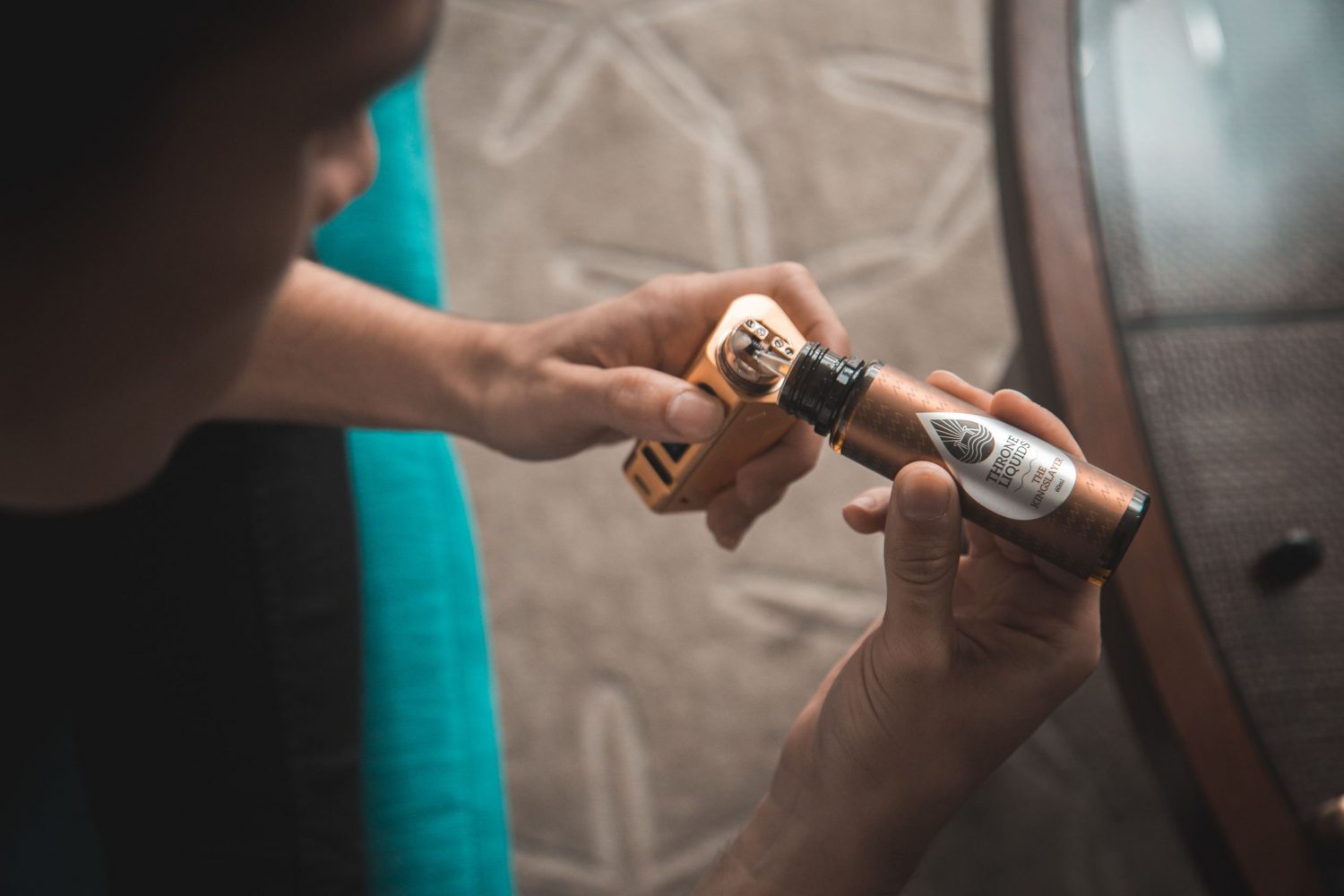
Electronic cigarettes or “e-cigs” have surged in popularity over the past couple years. Although less people smoke traditional cigarettes, e-cigs and vaping have become the new standard, making this vaping trend reach epidemic proportion especially within younger age demographics. According to Psycom, 1 in 5 high school students (3.05 million) and 1 in 20 middle school students (570,000) use e-cigs and vape pens. This dramatic increase in teen usage has resulted in high schools out right banning any vaping paraphernalia from school campuses across the nation.
What is vaping?
Vaping is the act of inhaling and exhaling the vapor produced by heating up the nicotine liquid. Some liquids are nicotine free and are solely flavored vapors awhile others have THC. These pens deliver high levels of nicotine, making the product extremely addictive. What was supposed to be a smoking cessation aid has actually formed a whole new throng of nicotine addicts. The number of lung illnesses linked to vaping has risen again across the United States.
Anti-tobacco made impressive gains over the years with smoking rates progressively down and even went so far to challenge millennials and Gen Z to be the generation that ends smoking. However, these anti-smoking groups have now met a whole new monster. Now their main fight is against vape pens, most popularly,
Their new video campaigns titled “No One Knows The Long-Term Effects of JUULing. Not even… the CEO of JUUL.” has garnered thousands of views. Although there are a number of e -cig brands and dozens of startups, Juul makes up a huge portion of the market and receives a lot of lot of backlash and blame. Juul has landed in lot of trouble for “accidentally” being marketed to young people via social media and for using their consumers s lab rats.
Adolescent Brain Development and Addiction
What is the most troublesome is that many teens believe that vaping is safer than cigarettes and that they are making a responsible health decision. The prefrontal cortex, also known as the decision maker, is not fully developed until the mid-20s. The pre-frontal cortex forms judgments and controls impulses and emotions and when it’s still in its immature state, immature behavior mostly results.
Not only does this make teens and young adults more risk-seeking but another part of their brain that is fully developed is the nucleus accumbens, also known as the reward system. Unfortunately, this combination makes teens and substance abuse very dangerous. Studies show that teens and young adults are more likely to become addicted to alcohol and drugs because of this brain plasticity.
Mental Health and Treatment
A study report by the University of California, San Diego School of Medicine reports that people who suffer from depression, anxiety and other mental health concerns are twice as likely to try e-cigs and three times as likely to use vape pens.
Many adolescents don’t believe they can become addicted to nicotine but face challenges when they try to quit. Those that do manage to quit encounter many daily relapse triggers including their friends or classmates that continue to vape, locations they would normally vape or general boredom. In this case, prevention is key. Taking time to educate your teen or young adult about the very real dangers of e-cigs and vape pens.Treatment including cognitive behavioral therapy, individual psychotherapy and group therapy as well as mindfulness treatment can help with nicotine addiction.
References:
https://www.nbcnews.com/health/vaping/vaping-illness-epidemic-shows-no-sign-slowing-n1064546
https://observer.com/2019/11/juul-e-cigarettes-addiction-tobacco-harm-reduction/
https://childmind.org/article/teen-vaping-what-you-need-to-know/
https://www.yalemedicine.org/stories/vaping-nicotine-addiction/
https://www.socialworktoday.com/news/dn_062014.shtml
https://www.psycom.net/mental-health-wellbeing/juuling-teenagers-vaping/